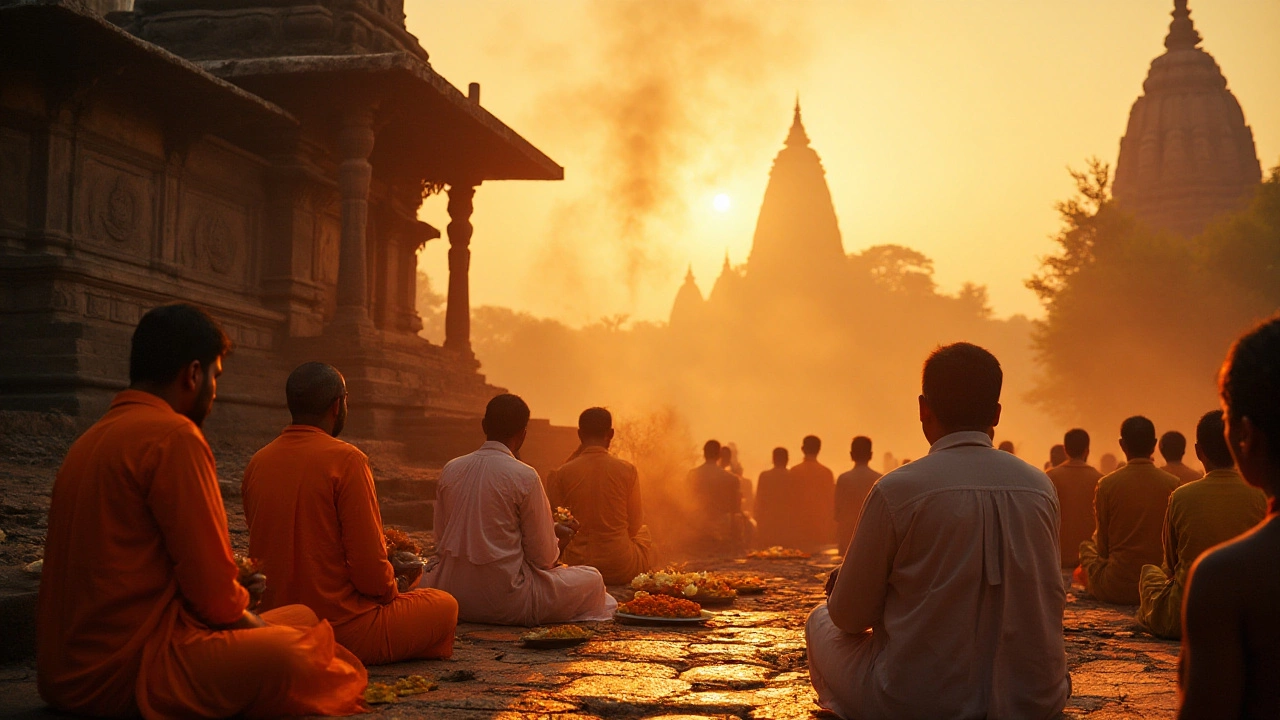SEARCH
Holiest Temple in India – What Makes It Special and How to Plan Your Trip
Did you know millions of Indian families believe this temple holds the power to grant wishes and cleanse sins? It’s not just a building; it’s the heart of countless prayers, festivals, and daily rituals. If you’re curious about why it’s called the holiest, or just want a clear game‑plan for a visit, keep reading.
Why It’s Called the Holiest Temple
The title comes from ancient stories that link the site directly to the main deity of Hinduism. Legends say the god himself appeared here, and centuries of royalty, saints, and ordinary travelers have left offerings at its steps. The temple’s architecture reflects those myths – every pillar, every carving tells a part of the story. Because of that deep connection, pilgrims treat a trip here as a life‑changing event.
Annual festivals draw crowds that fill the surrounding streets, turning the whole city into a living ritual. The sound of bells, the scent of incense, and the sight of devotees chanting together create an atmosphere you rarely find elsewhere. That shared energy is what makes the place feel holy to both locals and visitors.
Practical Tips for Visiting
First, pick a good time. Early mornings between 6 am and 8 am are quieter, and you’ll catch the sunrise over the ceremonial tank. If you can, avoid major festivals unless you want to be in the thick of the crowd. Weekdays in the off‑season (October‑February) give you more space to move around.
Dress modestly – no sleeveless tops, shorts, or open shoes. A simple cotton scarf or shawl works well if you’re unsure. Security checks are strict, so keep bags light and leave valuables at your hotel if possible.
Getting there is easy by train or bus; the nearest rail station is just a few kilometers away. Auto‑rickshaws and shared taxis wait outside the main gate, but agree on a price before you hop in. If you’re staying nearby, many guesthouses offer shuttle services during peak hours.
Cash is king. Most stalls sell puja items, flower garlands, and food for a few rupees each. Credit cards are accepted only at a handful of larger hotels, so carry enough small notes for offerings and snacks.Plan at least two hours for the main shrine: one hour to walk around the complex, another for a short darshan (viewing of the deity). If you want a deeper experience, book a guided tour that explains the symbolism behind each courtyard.
Respect the rules. Photography is usually prohibited inside the inner sanctum, and you’ll be asked to remove shoes before entering. Speak softly, avoid stepping on the sacred floor mats, and follow the line of devotees when moving forward.
Finally, stay hydrated and take breaks. The air can get warm, especially in summer, and the crowds move slowly. Grab a glass of cool coconut water from a nearby stall – it’s cheap, refreshing, and part of the local vibe.
Visiting the holiest temple isn’t just a sight‑seeing activity; it’s a chance to feel the pulse of a living tradition. With a little planning, you’ll walk away with memories that last longer than any souvenir.

Exploring the Most Sacred Hindu Temple in the World
Embark on a journey through India's spiritual heart as we explore the holiest Hindu temple in the world. Learn about the deep-rooted cultural significance of this sacred site and its history. Discover what makes it unique and why devout followers flock there from around the globe. Uncover the rituals, legends, and architectural marvels that enhance its spiritual aura. Practical tips for visiting and embracing the spirituality of this revered temple are also included.
Continue reading